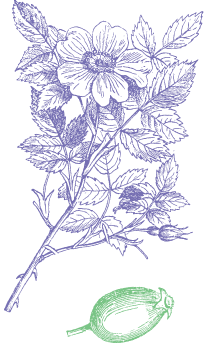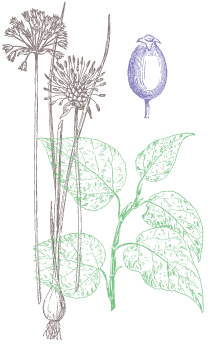Herbal Medicine
People have always looked to plants for healing, and herbs have been used as medicines for thousands of years. For the majority of people around the world, herbal medicine is still the main type of treatment used, in accordance with their own traditions. So for many, herbal medicine is not any kind of ‘alternative’ treatment in the way it has come to be viewed in the western world.
Many drugs prescribed today may still be derived from plants. Usually however, once the chemical profile of an active ingredient has been identified, it is often synthesised for manufacture on a very large scale. This synthesised ingredient may be powerful and fast acting but does not have the benefit of being modified. A key difference between herbal and pharmaceutical medicine is that the whole plant is used in herbal medicine, resulting in fewer side-effects. Plants have many different constituents which work together, with some modifying more powerful actions, making their effect on the body more gentle. These are the main reasons why herbal medicine is generally acknowledged as a safer form of medicine than its modern counterpart.
Herbs often work by supporting the body in redressing imbalances and correcting things that have begun to go wrong. One of the main words I associate with herbal medicine is ‘balancing’. As with many traditional crafts, it is the skill, experience and training of the practitioner that determines the outcome, as well as the quality of the herbal medicines. That is why attending a herbalist for treatment of your condition can be more effective than attempting to navigate your own way through the plethora of information that is available today. Some of this information is very useful and soundly based but it can be confusing and contradictory by times. Part of our materia medica has its roots in other cultures, making access to certain herbs more difficult. Purchasing over the internet raises safety issues as some material may be of questionable quality.
The raw materials
Many parts of a plant are used in herbal medicine. The knowledge about which plant part is best used has been refined and handed down over the years. In some cases it is the aerial (above ground) parts of a plant that are used, while other plants are harvested for their roots. This is because different parts of a plant contain different substances. Harvesting plants is a year round activity, with aerial parts mostly picked in spring or summertime, often before the plant is in full flower. Seeds are gathered in late summer or early autumn, when the plant is past its best. The root of a plant is usually harvested in the autumn or winter, depending on the particular plant.
Many berries don’t ripen before the autumn and then the race is on to get them before our feathered friends clear the branches. Sections of tree bark may be harvested, always with care and usually towards the year end, before the growing season comes around again.
The raw plant material is treated in a number of different ways. Sometimes it is dried and ground into powder to be used for capsules or tablets. Herbal teas can be made from the freshly picked leaves and flowers, but it’s also a good idea to dry some carefully to have for the rest of the year. Tinctures are made from a combination of alcohol and water, and are another popular way of making herbal medicine with a longer shelf life. This type of medicine is more concentrated and means that both fat and water soluble ingredients can be extracted from the plant. Herbs are also used externally as dressings, compresses, poultices or creams for skin conditions, wounds, sprains or other injuries. Essential oils are the important volatile oils from many flowering plants. They are often used in very small amounts and can be put in the bath, in a compress, used as an inhalation or in an oil burner for effect. They are quite powerful as they are so concentrated, so only a small amount is used.
Another aspect to herbal medicine is the manufacture of creams, syrups, tinctures and so on. This is done on a large scale for the herbal medicines market but it an absorbing and fun part of the herbalist’s trade. I like to make some of my own when I can as it keeps me in touch with the plants and the natural world. I enjoy taking small groups out on herbal foraging walks.
For more information about these and other workshops, click here.
Social Media
Payments Accepted

Contact Us
Contact Details
Phone: 0872455519
Email: [email protected]
Address:
Helen McCormack
186 Philipsburgh Avenue
Marino, Dublin 3

